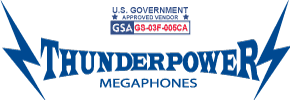Coaches, Use These Sports Megaphones To Prevent Vocal Strain
School’s back in session, and sports teams are gearing up for a new season! That means plenty of coaches across the country should be mindful of one thing: not losing their voice. If you’re a coach, we recognize how hard you must work to teach and mentor your players during practice and live events. But that shouldn’t come at the cost of your vocal chords and general health. While we strongly believe that sports megaphones are key to avoiding undue strain on your speech, we acknowledge that this isn’t the only solution you may need.
Why?
Megaphones fall under the category of noisemaker, which is usually banned from use during live game play. This means that while we can obviously share the benefits of using them during outdoor events and team practices, you’ll still need a plan for what to do when they aren’t an option.
We address some of those through the questions below.
Why Are Coaches’ Voices at Risk?
Hopefully you’re fortunate enough not to have experienced throat pain from yelling too much. Or, if you have, maybe you were wise enough to give your vocal chords time to heal before risking more damage. Either way, the reality is that vocal strain can affect coaches to different degrees depending on the sport, where it’s held, and how many people you’re trying to talk over.
Basketball coaches arguably have it the worst. They’re indoors, in rooms that can get exceptionally loud, and unable to use sports megaphones during live games. But because they need to communicate with their team, and because “the pressure to perform often leads coaches to yell,” The New York Times notes how there’s “rarely a moment during a game when a coach can use a normal conversational voice.”
Just how bad can vocal damage get?
Turns out, a lot. One coach even had to go in for two surgeries to remove polyps that formed in his throat.
Are There Home Remedies?
That same NYT article notes how many coaches who have accepted throat pain as part of their profession also rely on home remedies for treatment. These range from “daily cups of tea,” to “salt water in the morning and before games,” to Life Savers and cough drops.
Some say they simply get used to straining their voices, although that’s not recommended.
What Other Options Do Coaches Have?
Besides home remedies, coaches can try to prevent throat pain from happening in the first place through the use of vocal training. Similar to how singers practice ways to protect their vocal chords, coaches can adapt by learning safer voice projection techniques.
Another means of curbing undue vocal strain is to measure how much coaches are using their voices. Researchers are looking at how to identify vocal fatigue through the use of a “soft, flexible, postage-stamp-sized device [that] comfortably adheres to the upper chest to sense the subtle vibrations associated with talking and singing.” That data is then shared with a smart device to “monitor their vocal activities in real time throughout the day and measure cumulative total vocal usage.”
Can Technology Help?
When it comes to live games, it looks like coaches need to be mindful of how they yell, how often they yell, and what vocal training or home remedies they prefer to soothe any discomfort. As for practice, that’s where technology can give them the upper hand.
While some coaches have been known to use microphones connected with wireless PA systems, you shouldn’t be surprised to hear that our main recommendation is to use powerful sports megaphones.
What Sports Megaphones Does ThunderPower Offer?
ThunderPower maintains several megaphone models that coaches can use to train their teams. They include:
Power: 15 watts.
Range: up to 600 yards.
Voice amplification: up to 98 decibels (dB), with siren up to 112 dB.
Number of batteries: eight (8) AAs.
The THUN-150 may be the smallest of ThunderPower’s sports megaphones, but it still packs a punch! It offers clear voice projection, options for a siren and whistle, a lapel microphone, adjustable volume control, and a convenient wrist strap.
Power: 15 watts.
Range: up to 800 yards.
Voice amplification: up to 100 dB, with siren up to 112 dB.
Number of batteries: eight (8) AAs.
Shaped more like traditional sports megaphones, the THUN-120 offers a compact, lightweight design that’s reinforced by an industrial-strength chassis. Similar to the 120, it comes with a nylon carrying strap.
Power: 25 watts.
Range: up to 1200 yards.
Voice amplification: up to 102 dB, with siren up to 118 dB.
Number of batteries: six (6) Cs.
This is one of the best medium-sized, long-range megaphones on the market, offering the same features as the previous models but with greater range and power.
Power: 35 watts.
Range: up to 1400 yards.
Voice amplification: up to 108 dB, with siren up to 120 dB.
Number of batteries: eight (8) Cs.
The THUN-450 is incredibly loud, and offers a detachable palm mic for added convenience.
Please note: batteries not included with these models, but we do sell them.
Do You Need Sports Megaphones?
If you’re in need of the best sports megaphones on the market when it comes to coordinating practice with your team, you’ve come to the right place. Contact us today at 877-782-7073 to talk about the units discussed above, and get answers to any questions you may have.
If you’d like an example of how we’ve helped teams in the past, check out our partnership with Pacific Rowing Club.








